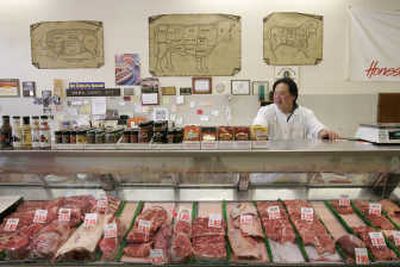Chicken, pork costs may rise

Americans may be getting another helping of food inflation, and it seems likely to come from higher prices for chicken and pork.
Overall food inflation could double this year, lifted by the rising costs of fuel, corn and soybeans, some analysts predict.
Food inflation hit 4 percent last year, up from 2.4 percent in 2006. While beef prices were already high, chicken and pork prices didn’t reflect record costs for feed and fuel. That’s poised to change as chicken and pig producers who have been losing money slaughter more animals to decrease the supply and raise the prices they can charge.
Higher food inflation would further challenge shoppers contending with the worst food inflation since 1990.
U.S. shoppers spent 5.8 percent of their income on food in 2006, according to the U.S. Department of Agriculture – a lower proportion than any other nation. In the United Kingdom, consumers spent 8.7 percent of their income on food, and in most of the world it’s at least 10 percent.
But the U.S. portion seems certain to rise.
“American consumers are only just beginning to feel the impact of sharply higher food prices,” said Clint Rivers, chief executive of Pilgrim’s Pride Corp. The nation’s largest chicken producer posted a wider quarterly loss Monday as it paid more for feed and took a restructuring charge.
Tyson Foods Inc., the world’s biggest meat producer, forecasts that its expenses will rise $1 billion this year, including $600 million for corn and soybean meal and $100 million on grain. The balance will come from higher prices for cooking oil, breading and fuel costs, the company said.
“Everything that uses wheat, everything that uses corn, everything that uses corn syrup has got to go up,” said C. Larry Pope, president and chief executive of Smithfield Foods Inc., the world’s largest pork producer, in a recent speech.
Beef is already high, so may not see increases like those expected for chicken and pork, said Jim Hilker, an agricultural economist at Michigan State University. But beef prices “won’t come back down,” he said.
Pork farm losses, though, may total $3.8 billion for 2008, one-quarter of total production, according to Chris Hurt, an agricultural economist at Purdue University. He calls the industry “a financial disaster in progress.”
Agriculture Secretary Ed Schafer last week announced a government plan to buy up to $50 million of pork for child nutrition and domestic food assistance programs – at the urging of the National Pork Producers Council.